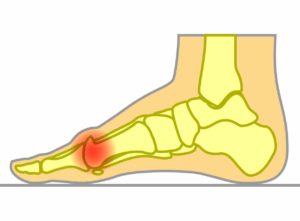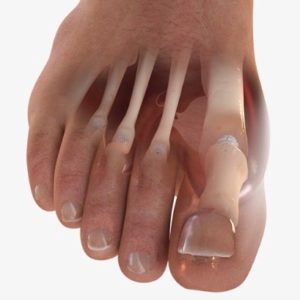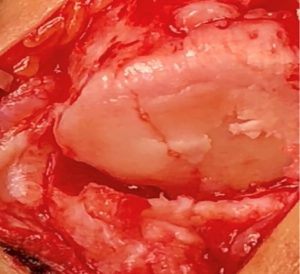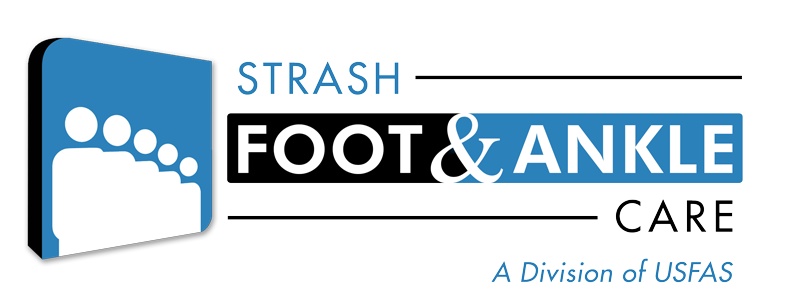
24 Jan Hallux Rigidus: What is it and what does it mean?
What does the term hallux rigidus mean? Essentially wear and tear. Prolonged and repetitive trauma can lead to hallux rigidus and a person’s foot type can contribute to this pathology. It’s a descriptive term for osteoarthritis (OA) and degenerative joint disease (DJD) of the great toe joint.

It’s a condition involving the first metatarsal-phalangeal joint that results in articular joint disease deterioration with cartilage thinning and can even have complete loss of cartilage to the joint. There may also be proliferative bone formation (bone spurs) involving both the head of the first metatarsal and base of the proximal phalanx.
It’s estimated that degenerative joint disease affects close to 30 million people in the United States. Pain and reduced motion are classic symptoms of hallux rigidus. Degenerative joint disease (DJD) is a debilitating disease of the musculoskeletal system where patients have progressive degeneration of both articular cartilage and subchondral osseous tissues, causing pain and adversely limits functional capabilities.
If you’re suffering from pain in the great toe joint, you’ll want to visit your podiatrist. Your foot and ankle surgeon will perform a comprehensive clinical evaluation of the great toe joint that includes x-rays along with a history and physical examination to assist in devising an appropriate surgical treatment plan.

There are numerous surgical approaches to treat hallux rigidus. Surgery varies from simply “cleaning up the joint” (Cheilectomy procedure), performing various osteotomies of the first metatarsal, total or partial joint replacement to fusing the great toe joint depending on the amount of pathology and the decision made by your foot and ankle surgeon. However, with these procedures some patients still complain of joint pain post-operatively over the long-term.

Joint salvage is recommended in early OA of the great toe joint. Cheilectomies and bone shortening osteotomies can provide a degree of relief but can also exacerbate symptoms if cartilage injury is present within the joint. Current total joint replacement devices for the great toe joint have shown a high incidence of complications and low survivability. Of late there has been a great deal of discussion in regards to the articular cartilage, subchondral bone and the quality of the cartilage at the time of surgery and how this can be treated/addressed.
A new and exciting concept that addresses the quality of the joint cartilage in the surgical treatment of hallux limitus has emerged recently. It’s a “titanium” implant coated with hydroxyapatite that assists in rapid bone remodeling of subchondral bone on the head of the first metatarsal. This devise is known as the S-Core and early studies indicate it can reduce pain to the great toe joint associated with cartilage loss.

If you’re having pain to your big toe joint that interferes with walking and athletic activities, you do not have to live with this pain. Ask the foot and ankle surgeons at Strash Foot and Ankle Care what treatment course they recommend.
Remember, at Strash Foot and Ankle Care, we’re here to help you put your best foot forward again!

